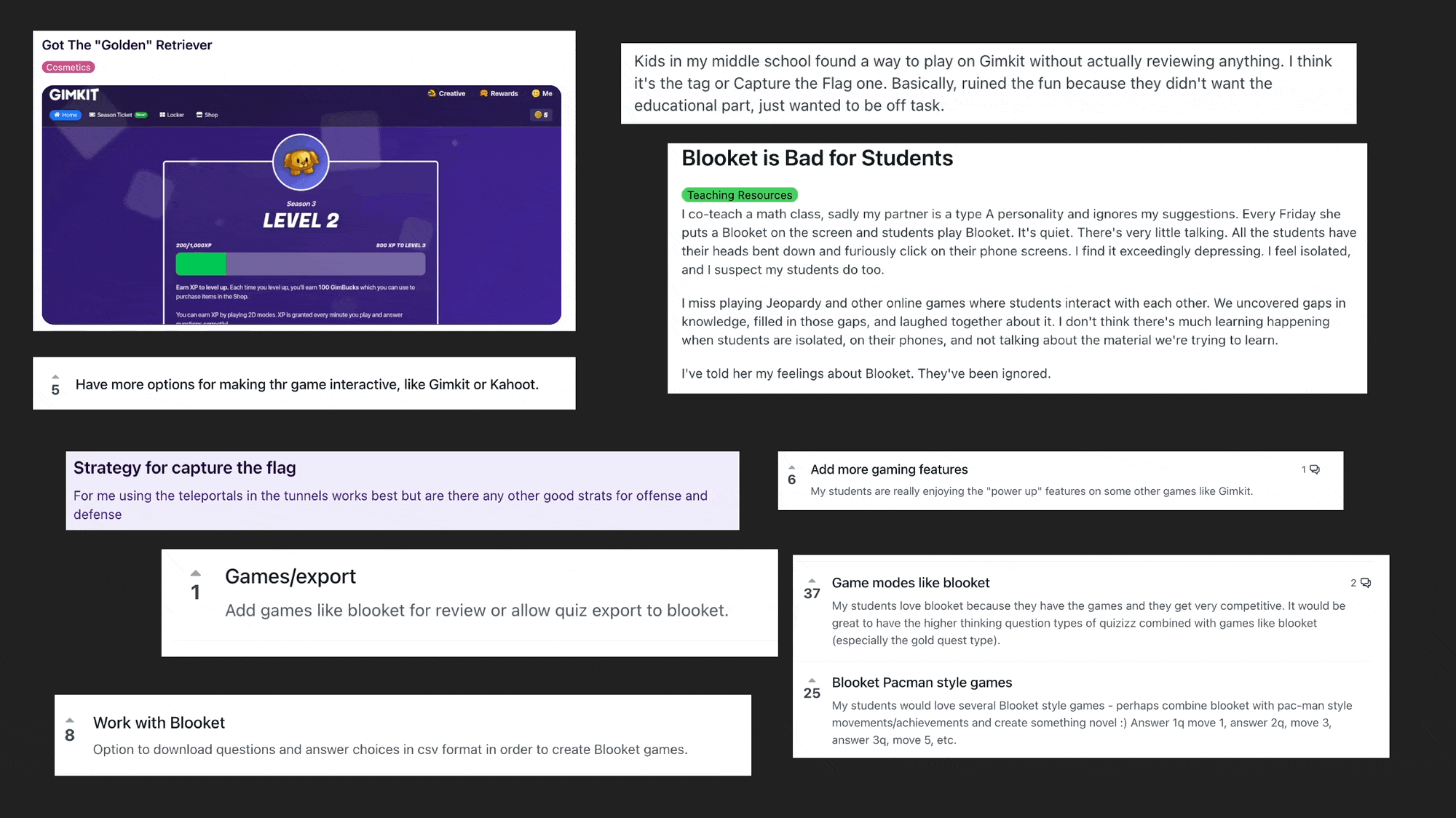Making learning gamified for students at Quizizz
A case study on how we made students fall in love with Quizizz again





Overview - The fun crisis
It was year 2023, and we noticed something concerning at Quizizz. Our platform was losing its market share to gamified learning platforms like Blooket and Gimkit.
The reason? Students had built this perception that Quizizz isn't fun.
They would ask their teachers to host quizzes on Blooket and Gimkit, and teachers would have to follow. This shift in student preference was becoming a real challenge for Quizizz's position in the educational technology space.
My Role
Led the end-to-end journey as a lead designer. Managed art direction, facilitated play test sessions alongside the research team, and aligned the stakeholders.
Team
The team consisted of me, a Jr. Designer, a Researcher, a Product Manager, an Illustrator, and 5 Engineers.
Research

Teacher Insights
We connected with a few teachers, also looked at various forums and figured:
- 1Blooket/Gimkit were taking over ice-breakers and review use cases
- 2Quizizz was seen as a serious assessment tool rather than an engaging platform
- 3Quizizz's live mode hadn't evolved enough to provide variety
- 4Teachers valued Quizizz's educational rigor over extreme gamification
Student Preferences
Since we couldn't reach US students directly, we analyzed Blooket/Gimkit's Reddit and Discord
- 1Students enjoy strategy-based gameplay
- 2They want classroom banter and bragging rights
- 3Enjoy unpredictable elements that can change game outcomes
Our challenge was clear: Create engaging gameplay that students love while maintaining the educational rigor teachers valued in Quizizz.
Introducing
Game Mechanics

Peer to Peer
Fun classroom banter within students

Strategy
Choosing the right form of attack or defense

Loss Aversion
Stay in line and protect score or sabotage
My Favorite Interactions
Levels - Roulette
Students progress through levels, and upon reaching certain milestones, they get to choose between different variations of strike and shield.
Striking Success
This demonstrates how students can strike another students score.
Shield in Action
This shows how students strikes work when someone shields their score.
Impact
PSAT (Participant Satisfaction Score) is our key metric for measuring student engagement
Student & Teachers' Love
What students said
What teachers said














